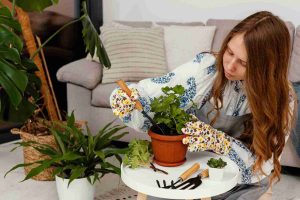Taking care of indoor plants became a fun hobby for me during lockdown. At first, I thought I needed to buy expensive tools and products. But one day, I ran out of fertilizer and used a banana peel instead. It worked so well that I started trying other things from around the house. That’s how I discovered many surprising household items you can use for indoor plant care.
From kitchen scraps to old toothbrushes, so many simple things help my plants grow better. These items save money and also reduce waste. I love finding new ways to care for my plants without spending too much.
If you love your houseplants like I do, you’ll enjoy these easy and smart tips. In this article, I’ll share 10 surprising household items you can use for indoor plant care. These ideas really helped my plants stay green and healthy, and I hope they help yours too!
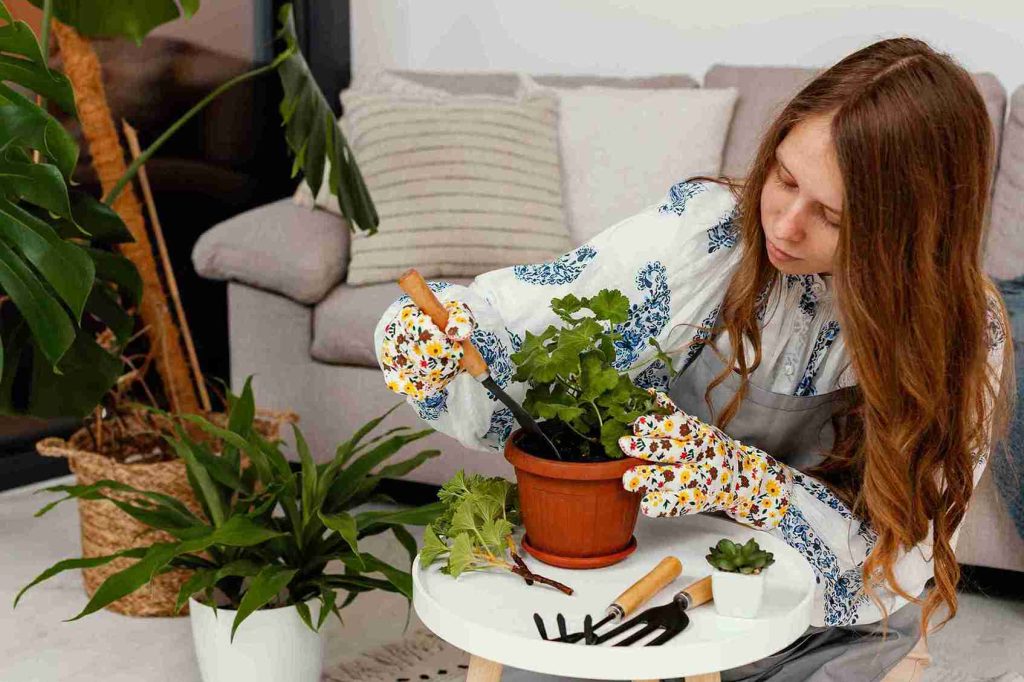
Why I Started Using Surprising Household Items
I used to buy every new plant tool I saw. But things got expensive quickly. One day, I ran out of a small watering can. I looked around and found an old plastic bottle. I poked a few holes in the cap. It worked great! That’s when I realized I didn’t need fancy tools.
My kitchen had many useful things already. It felt fun and creative too. I started using spoons, forks, and old cups. My plants were happy, and I saved money. It also helped me waste less stuff. I didn’t throw away things that could be reused. Now, I always check my home first before buying anything new. My plant tools are personal and unique.
They remind me to be smart with what I have. If you’re on a budget, try this. You may like it more than store-bought tools. Trust me, your plants won’t care how fancy your tools are. They just need care. Let me share some cool ideas I’ve used at home. These simple tools can help your plants grow well. They’re cheap, easy, and fun to make.
Old Spoons and Forks as Garden Tools
I often lost my small garden tools in the yard. One day I used an old spoon. It was strong and easy to hold. I used it to dig and plant seeds. I even used a fork to loosen the soil. These kitchen tools worked better than I expected. They didn’t bend or break like plastic tools. I cleaned them before using them with my plants.
Now I keep a few in my plant basket. They help me work faster and better. I use a spoon to scoop soil into pots. I use a fork to remove weeds and roots. These tools feel good in my hand. They’re light and easy to wash.
I even gave them fun names like “soil scooper” and “root picker.” Kids love to help when they see them. You don’t need to buy anything fancy. Just look in your kitchen drawer. Spoons and forks can do many small garden jobs. Try them once and you might keep using them. They’re handy, simple, and always available. I save time and money using them. My plants don’t care about the brand. They just need good soil and love. Old silverware really works well.
Empty Yogurt Cups as Seed Starters
I never had fancy seed trays when I started. One day I had an empty yogurt cup. I cleaned it and filled it with soil. Then I planted a seed inside. It worked so well that I kept doing it. I now save all yogurt cups in a box.
I punch a small hole in the bottom for drainage. Then I line them up in a tray. They make perfect homes for tiny seeds. They are small, light, and just the right size. They hold soil and moisture really well. When the seed grows, I just move it to a pot. I even label them with markers. My windowsill looks so cute with these little cups.
They don’t cost anything and they help me recycle. I feel proud to use them this way. I’ve also used pudding and fruit cups too. They all work great for new seedlings. These cups are a perfect size for little hands. My kids help plant seeds in them every spring. It becomes a fun family activity. You don’t need seed trays at all. Just clean your old yogurt cups. Your plants will be happy in their tiny homes.
Plastic Bottles for Watering and Mini Greenhouses
Plastic bottles are magic for plants. I use them a lot. First, I turn small ones into water bottles. I poke holes in the cap. Then I squeeze water into the soil. It’s gentle and perfect for small plants. No more water spilling everywhere. Big bottles become mini greenhouses. I cut off the bottom and placed the top over a seedling.
It traps moisture and warmth. The plant grows faster. I even use the bottom halves as pots. I poke holes for drainage. Then I fill them with soil. They work great on my windowsill. Plastic bottles are always around the house. I never run out of them. I love how many ways I can use one bottle. It saves me money and helps the planet.
I clean them well before use. I also decorate them with markers and stickers. It makes plant care even more fun. These bottles are strong and last a long time. They’re great for beginners. You don’t need to buy anything. Just reuse your old bottles. Your plants will thank you for it. It’s easy, fun, and super useful. Try it once and you’ll keep doing it too.
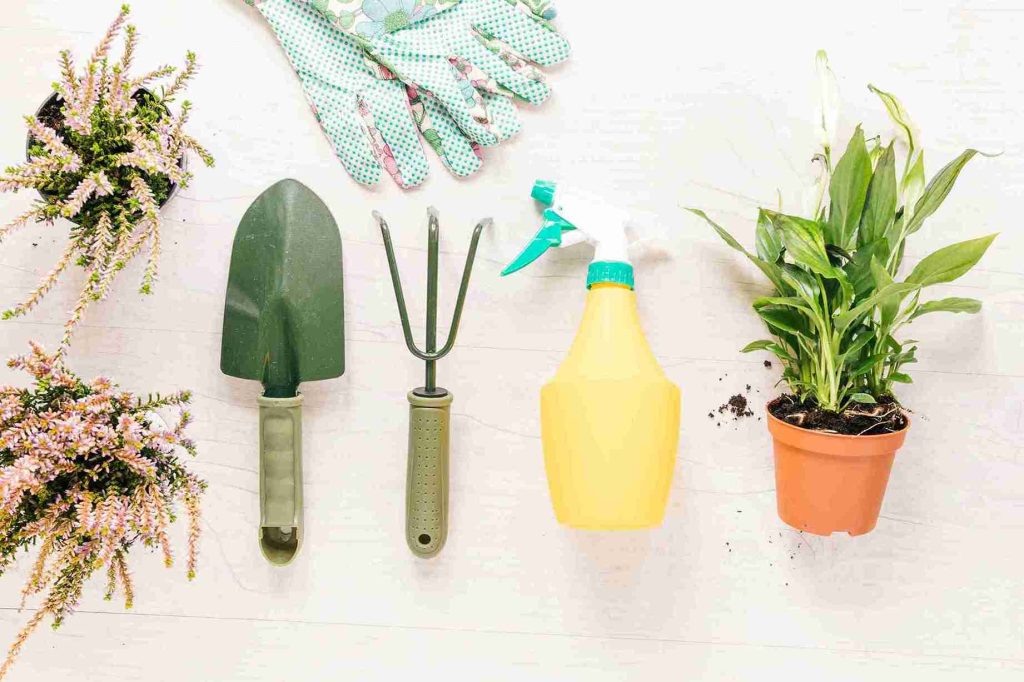
Egg Cartons as Seedling Trays
Egg cartons are one of my favorite plant tools. I always have them. Instead of throwing them away, I plant seeds in them. I cut the carton in half. I fill each section with soil. Then I press one seed into each spot. I keep it in a tray to catch water. It’s like a mini garden. The paper ones are the best. They hold moisture and break down in the soil.
When the seedling is ready, I plant the whole section. I don’t need to pull out the plant. That means the roots don’t get hurt. I love how easy it is. It’s also fun for kids. They enjoy filling the little spaces. I use the top of the carton as a tray. It holds water that drips from below. It’s such a simple and smart idea. No more buying seed trays. These are free and easy to find.
I always save egg cartons now. They stack well and don’t take up space. I even write names on each spot. My plants grow strong in them. Try it next time you make eggs. You’ll love this trick. It’s the best way to start plants at home.
Chopsticks and Skewers for Support and Signs
I love using chopsticks and skewers with my plants. They are so helpful. I use them in many ways. First, I use them to support weak stems. I stick one into the soil and tie the stem. It keeps the plant straight and safe.
I also use them as plant markers. I write the plant’s name on a piece of tape. Then I wrap the tape around the stick. It’s a cheap and easy sign. I use skewers to poke holes in the soil too. That helps air reach the roots. Sometimes, I mix the soil using a skewer. It’s like a little garden tool. Chopsticks are strong and last a long time. I get them from takeout meals.
I never throw them away now. Skewers are great for taller plants. They give good support in small pots. My plants stay upright and look neat. These tools are light and simple. They don’t harm the plant. They’re also fun to decorate. I draw cute faces or write messages. It adds joy to my garden. You’ll find many uses for them. Just look around your kitchen. Your next plant tool might be a chopstick!
Old Towels and T-shirts as Pot Liners
I often needed something to line my plant pots. I didn’t want soil falling out. I also wanted to stop water from rushing through. One day, I cut up an old towel. I placed it at the bottom of the pot. It worked better than rocks. The towel soaked up extra water. Then it let it go slowly. My plant roots stayed moist but not soggy. I’ve used old T-shirts the same way.
They are soft and easy to fold. I cut them into small circles. Then I place them in all my pots. They keep the soil in place. They stop dirt from leaking out of the hole. My plants grow healthier with this trick. I wash the fabric first. Then I store the pieces in a box. They are always ready when I repot. I even wear colorful shirts to make them look nice.
I love that I’m reusing things. It saves money and helps the planet. This trick works great in plastic and clay pots. Try it before using pebbles. You might like it more. Old towels and t-shirts are now part of my garden life. They make plant care simple and smart.
Muffin Tins and Ice Cube Trays for Propagation
One day I ran out of small pots. I had many cuttings to plant. I opened a drawer and saw an old muffin tin. I filled each cup with soil. Then I placed a cutting inside. It worked better than I hoped. Each plant had its own little spot.
The tray was easy to move and water. It looked neat and tidy too. I also tried using an ice cube tray. It was perfect for tiny cuttings. I placed the tray near a sunny window. Roots started to grow in a few days. I use these trays a lot now. They are great for growing new plants. I always clean them first. Then I fill them with soil or water. You can also use them to start seeds. They hold water well and don’t take up much space.
I stack them when not in use. It’s a fun way to garden indoors. These trays were just sitting unused. Now they help me grow green babies. I never thought muffin tins could do this. Try it once and you’ll be surprised too. They’re cheap, handy, and fun to use.
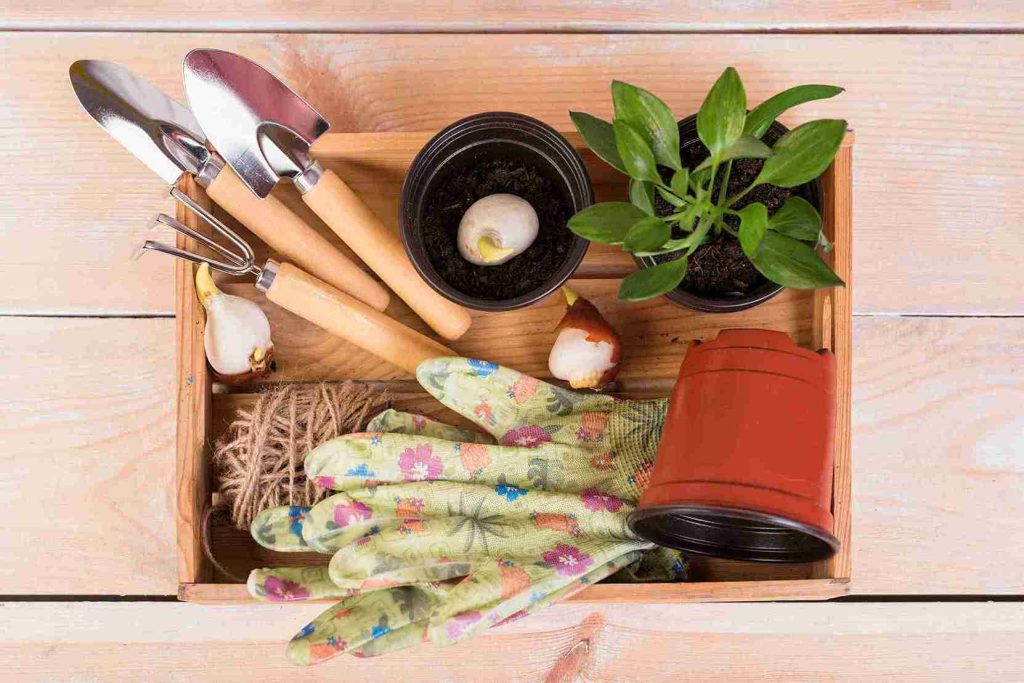
Coffee Filters to Prevent Soil Leaks
Soil leaking from pots really annoyed me. Water would run out fast. I didn’t like the mess it made. One day I grabbed a coffee filter. I placed it inside the pot before the soil. It stopped the soil from falling out. Water still drained, but slower. The filter helped hold moisture.
My plants started to grow better. I now use coffee filters in all my pots. They are cheap and easy to use. You can find them in most kitchens. I even reuse old ones after drying them. They last a long time in the pot. This trick works best for indoor plants. I don’t see dirt leaking anymore. My shelves stay clean and dry. The filters fit most pot sizes.
I just fold them to fit well. It takes only a second to do. My plants seem happier with it. Their roots stay healthy and strong. I also feel better using what I have. No more buying fancy liners. Coffee filters do the job just fine. You should try it too. It’s simple, smart, and super helpful.
Reusing Takeout Containers as Drip Trays
Takeout containers pile up fast at my house. I didn’t want to throw them away. Then I had an idea. I used them under my plant pots. They caught extra water that drained out. No more mess on my shelf. No more wet spots on the table. The containers were just the right size. I cleaned them before using them. Then I placed one under each pot.
They worked like magic. My room stayed dry and clean. I also used them to group small pots. That way I could move them all at once. It made plant care easy and neat. Some containers had clear lids too. I used those to make mini greenhouses. The lids helped hold in warmth and moisture. My plants grew faster and healthier. I even labeled each tray with the plant’s name. It looked super organized and cute. These trays cost nothing.
Paper Towels Help Catch Extra Moisture
One day my plant’s pot leaked water on the floor. I needed a fix. I grabbed some paper towels. I placed them under the pot. It worked great. The towel soaked up all the extra water. Then I thought of another use. I used paper towels in the pot’s base.
They helped keep the roots from sitting in water. That stopped root rot. I also use towels to check soil moisture. I press one on the soil. If it comes back wet, I wait to water it. If it’s dry, I give it water. This helps me avoid overwatering. Paper towels are cheap and easy. I always have some at home. I even use them to wipe plant leaves. It keeps them clean and shiny.
My plants love that. I now keep a roll near my plants. Every care day I use them. They do many jobs. I never thought paper towels could help so much. But they really do. They saved my plants from rot. And saved my floor from the mess. This is a must-try trick. I learned it by accident. But now I do it every week. My plants thank me with healthy green leaves.
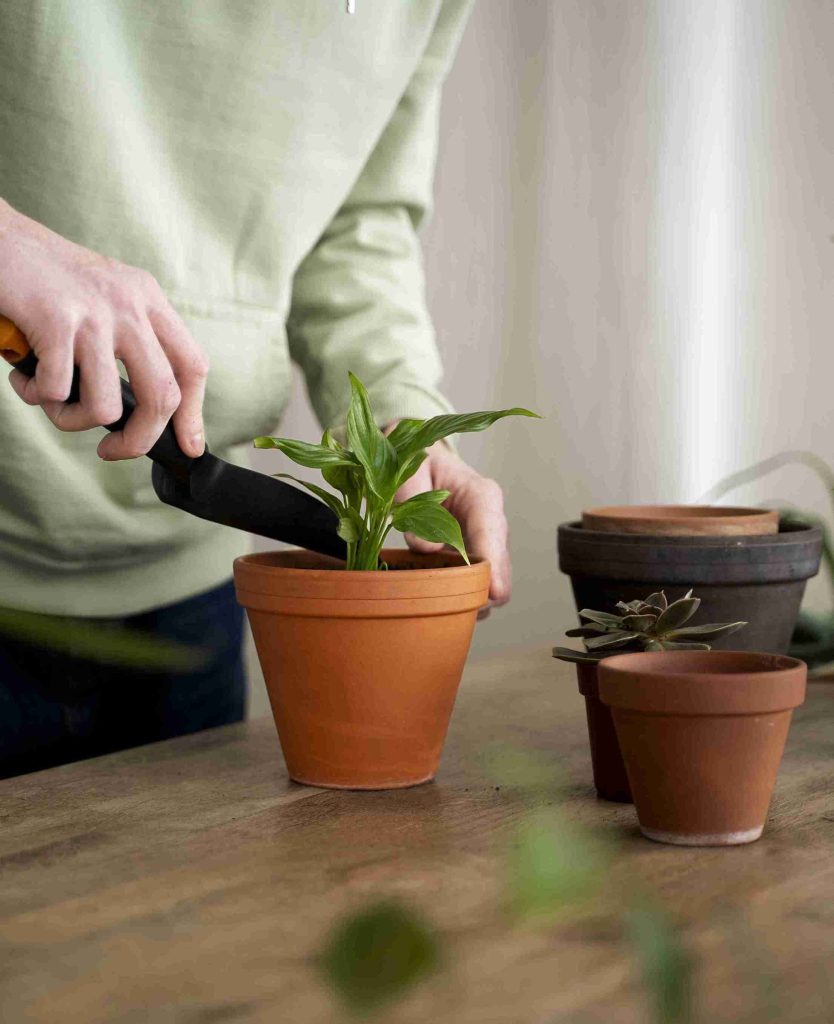
Conclusion:
They’re always around after takeout. I feel good reusing them this way. It saves money and helps my plants. Give it a try next time you order food. Don’t throw the containers away. Your plants will love them!
FAQ
Creative reuse for houseplants at home
Use old jars, cups, or baskets as fun plant pots. Reuse kitchen tools for watering, cleaning, or supporting plants.
How to use cinnamon for indoor plants
Sprinkle cinnamon on the soil to stop mold and fungus from growing. It also helps roots heal after cutting or repotting.
Using coffee filters in plant pots
Place a coffee filter at the bottom of the pot. It keeps soil in and lets extra water drain out.
Repurposing chopsticks as plant stakes
Stick chopsticks in the soil to hold tall plants straight. Tie stems gently with string for extra support.
Cleaning plant leaves with lemon juice
Mix lemon juice with water and wipe the leaves with a cloth. This removes dust and adds a pretty shine to the leaves.
Natural pest control with dish soap for houseplants
Mix a few drops of dish soap in water and spray it. This helps kill bugs like aphids and spider mites.
Using baby wipes to clean plant leaves
Gently wipe leaves with a soft baby wipe to remove dust. It keeps the leaves shiny and helps them breathe better.
Homemade fertilizer with banana peels for houseplants
Cut banana peels into small pieces and bury them in the soil. They give potassium and nutrients that help plants grow strong.
Egg shells as fertilizer for indoor plants
Crush clean egg shells and mix them into the potting soil. They give calcium and help make the roots strong.
Using Q-tips to remove pests from plants
Dip a Q-tip in soapy water and gently dab the pests. This works well for removing bugs without hurting the plant.
Aspirin in soil for healthier houseplants
Crush one aspirin and mix it into the watering can. It helps plants fight stress and grow stronger over time.
Dryer sheets for plant pot drainage
Place a dryer sheet at the bottom of the pot. It stops soil from falling out but lets water drain easily.
Cardboard for cactus repotting
Use thick cardboard to gently wrap and hold the cactus. This protects your hands from sharp spines while repotting.
Salad tongs for handling prickly plants
Use salad tongs to pick up or move spiky plants. They help you avoid touching sharp parts and getting poked.
Old makeup brushes for plant cleaning
Brush off dust gently using soft makeup brushes. This keeps leaves clean without hurting delicate parts.
Green tea leaves as plant fertilizer
Sprinkle used green tea leaves into the plant soil. They add nutrients and help the soil stay healthy.
Kitchen skewers for supporting seedlings
Stick wooden skewers in the soil to hold up small plants. Tie seedlings loosely so they grow straight and tall.
Using towels to repot cacti safely
Wrap a small towel around the cactus to protect your hands. This makes it easier to lift and move the plant.
Fish food as fertilizer for carnivorous plants
Sprinkle a few fish food flakes onto the soil. These give nutrients that meat-eating plants love and need.


